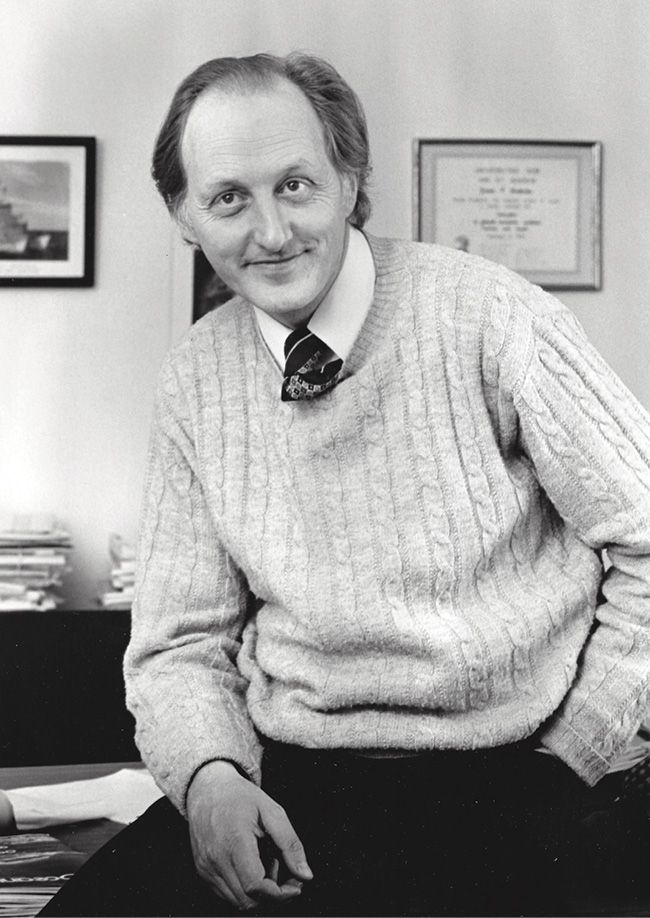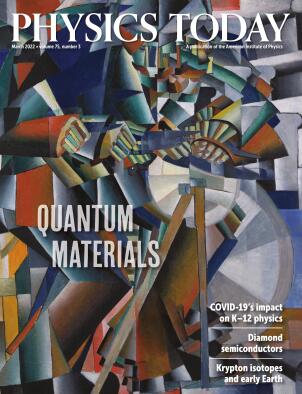Francis Patton Bretherton
DOI: 10.1063/PT.3.4967
Francis Patton Bretherton had two overlapping careers: He made brilliant theoretical advances in the dynamics of the rotating and density-stratified atmosphere and ocean and later became a pioneering, passionate, and influential leader in atmospheric and global change research programs. He died from dementia-related health problems on 27 June 2021 in Saint Louis, Missouri.

Francis Patton Bretherton
UNIVERSITY CORPORATION FOR ATMOSPHERIC RESEARCH

Born in Oxford, UK, on 6 July 1935, Francis attended Clifton College on a scholarship from 1948 to 1952. He played the flute, acted in school plays, and joined a meteorology club, which entailed rising early to study the latest weather maps. In December 1952 he won a scholarship to Trinity College, Cambridge, to study mathematics. He spent part of 1953 as an exchange student in Munich, Germany, where he met his future wife, Inge Kornrumpf. After two years of compulsory military service, he entered Cambridge University in October 1955 and graduated in 1958.
Francis stayed at Cambridge for graduate studies, supervised by G. I. Taylor and Philip Saffman. His study of the motion of bubbles in tubes is highly relevant to practical problems in microfluidics. In 1961 he joined MIT as a postdoc, loving the scientific environment and a camping trip across the country. He returned to Cambridge in 1962 to start a program in theoretical meteorology, conceived by George Batchelor, in the department of applied mathematics and theoretical physics.
During the next five years, Francis centered much of his research on the conservation of potential vorticity, the principle that generalizes angular-momentum conservation for wildly deforming fluid elements on a rotating planet and underlies dynamical oceanography and meteorology. Francis recognized that a relation between the fluxes of momentum and potential vorticity provides far-reaching insights into how flow instabilities lead to nonlinear eddies, which contribute to weather and shape global-scale mean circulations. He also showed how flows can be sharpened into intense singularities, such as the fronts associated with the passage of storms in the atmosphere.
Francis made key contributions to theories of wave motion. Using a Hamiltonian formulation, he proved that wave groups propagating in a moving fluid do not conserve energy but rather conserve energy divided by the wave frequency that would be observed moving with the mean flow. The “wave action” is an adiabatic invariant, analogous to that of a pendulum with a string of changing length. Francis also showed that for steady internal waves generated by wind blowing over mountains, a persistent force is felt at the ground. Unlike for simple friction, however, the reaction on the atmosphere is distributed aloft where the waves are dissipated, including via wave breaking near critical heights where the wind speed vanishes. The results are now incorporated into all weather-forecasting and climate models.
The US continued to beckon. Francis was the principal lecturer at the Woods Hole Oceanographic Institution’s Summer Study Program in Geophysical Fluid Dynamics in 1965 and spent a sabbatical in Miami, Florida, and San Diego, California, in 1967. In 1969 he joined the faculty of the Johns Hopkins University, where Inge obtained her doctorate as a step on the way to a distinguished career in developmental psychology.
At Johns Hopkins, Francis built on his 1964 paper exploring nonlinear wave–wave interactions—using an idealized “Bretherton equation”—and clarified the classes of wave–wave interaction that redistribute internal wave energy in the ocean across wavenumber–frequency space. The redistribution has significant implications for the turbulent mixing that controls many aspects of the overturning ocean circulation, oceanic carbon storage, and climate.
Francis also played a leading role in the 1973 Mid-Ocean Dynamics Experiment. It was the first multicomponent investigation of large-scale turbulence—the 100-km-wide eddies that dominate the kinetic energy of the entire world ocean—using a vast array of new moored and drifting instruments. Francis’s exposure to large programs led to his appointment as director of the National Center for Atmospheric Research (NCAR) in Boulder, Colorado, from 1974 to 1980. There he helped pioneer a broader concept of climate research.
From 1983 to 1988, Francis chaired NASA’s hugely influential interdisciplinary Earth System Sciences Committee, with recommendations that led to the establishment of the US Global Change Research Program and NASA’s Earth Observing System. The committee’s approach to understanding climate in terms of interacting Earth processes is graphically depicted in what became known as the Bretherton diagram.
In 1988 Francis and Inge accepted faculty positions at the University of Wisconsin–Madison; Francis also took over as director of the Space Science and Engineering Center. He continued research on remote sensing that he had started while at NCAR. He retired in 2001, and in 2017 he and Inge moved to Saint Louis to be near family.
With a memorably loud voice and commanding presence, Francis could dominate meetings, but in an inspiring rather than intimidating way. In the words of Bill Hooke, “The authority he carried . . . was always the power of his ideas, not his position on any organization chart.” His influence lives on.
More about the Authors
Chris Garrett. Victoria, British Columbia, Canada.
Michael Edgeworth McIntyre. Cambridge, UK.
Peter Rhines. Port Townsend, Washington.




